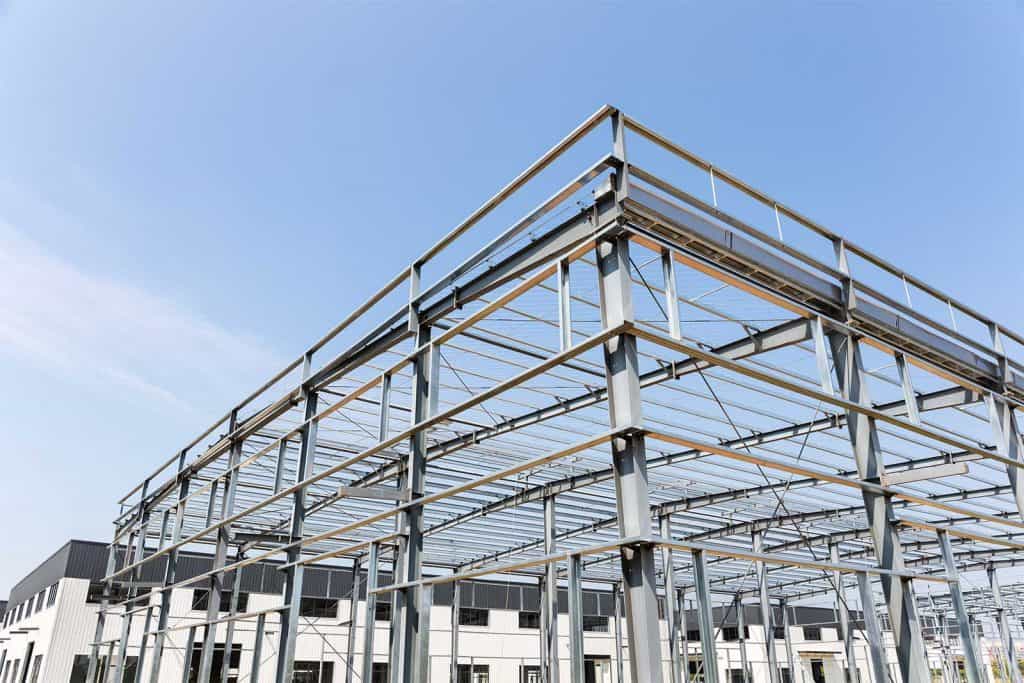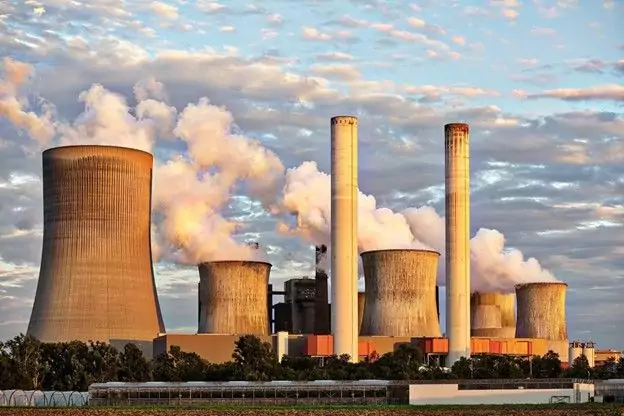Ever wondered about the Great Pyramids of Giza? How were they made and what made them last?
Well, we can thank the first structural engineers for that.
Structural engineering is a subset of civil engineering, focusing on the “bones and muscles” of man-made structures. Structural engineers are also responsible for calculating the strength and stability of load-bearing structures to withstand earthquakes, wind, and other natural disasters.
In other words, the ultimate goal of a structural engineer is to make sure that these structures are able to defy the stresses and pressures of the environment they’re built in and that they will be safe and stable for a long time.
To do this, they are also responsible for evaluating, estimating, and choosing the right materials for the construction of a structure, as well as computing and determining loads and grade requirements for them.
Table of Contents
- The History and Importance of Structural Engineers
- What is Structural Engineering?
- What Does A Structural Engineer Do?
- Types of Structural Engineering Jobs
- Is an Architect and a Structural Engineer the Same Thing?
- Where Do Structural Engineers Work?
- Structural Elements
- The Future of Structural Engineering
- Multi-Discipline Engineering Services
The History and Importance of Structural Engineers
Among the first structural engineers in recorded history was a man called Imhotep. They were involved in the building of the Great Pyramids of Giza circa 2700 B.C.E.
We’ve all heard of the Great Pyramids of Giza. They’re known for their stability and enduring construction with a structural form that can be scaled.
What’s less known about them is the fact that their long-standing structural integrity isn’t possible by their shapes alone, but also by virtue of the quality of materials used.
And that’s the finest achievement for a structural engineer.
To be able to select only the best and most fitting material relative to the structure’s purpose and environment that will help it to resist wear and tear brought about by weather, climate, and natural disasters.
But of course, even without the records, structural engineering dates back even earlier. The very first time a shelter was made using twigs with vines to support them, the primitive huts made of big leaves and stones, as well as the Hanging Gardens of Babylon and the sophisticated Grecian temples.
Some of the most prominent practitioners of structural engineering in modern times are:
- Gustav Eiffel who helped build two of the most iconic landmarks in history: the Eiffel Tower and the Statue of Liberty in New York, USA
- Peter Rice with his Sydney Opera House
- Bridge master Fritz Leonhardt
- William Baker for his Burj Khalifa

What is Structural Engineering?
Structural design is a highly specialized field of civil engineering, one of the oldest engineering disciplines.
While civil deals with design elements as well as their construction, Structural design focuses more on evaluating and inspecting the materials for the construction and ensuring that they can support the design set by the civil engineer and architects.
Structural design combines the fundamental principles of physics with material science in finding, discovering, developing, and using materials that will be able to withstand the forces that the structure will encounter during its service or usage.
Structural design can also be a tool or a process where structural engineers first determine:
- the cross-sectional dimension
- the evaluating grade of material
- how much the reinforcement is required
What Does A Structural Engineer Do?
Generally, structural engineers plan, design, and oversee the construction of structures such as buildings, dams, bridges, as well as modifications or extensions to existing structures.
They work closely with civil engineers and architects, focusing on the smaller details such as the grade and load of the materials for construction, the elements to which the structure will be exposed, and even the materials’ economic-efficiency.
Aside from large buildings and structures, structural engineers also develop and build beams, trusses, rafters, roof and door frames, braces, foundations, and walls.
In addition to analyzing and evaluating the materials needed to create a safe and stable structure, structural engineers estimate the quantities of the materials to be used as well as the cost of both the equipment and labour.
After these initial preparations, the structural engineer would visit the project sites to inspect and monitor the progress being made and to ensure that everything is going according to the planned specifications for the design.
Another important task for them is to conduct studies of the environmental conditions and traffic patterns to assess and determine potential problems and prepare a solution for them.
Design Structures
Structural engineers help design and build structures, beautiful structures, useful structures and sometimes simply modern structures – anything from bridges, rollercoasters and skyscrapers to hospitals, homes and public artworks. They work as part of a team alongside architects, builders, engineers and other specialists.
Structural engineers design structures so they’re strong enough to support heavy loads (e.g. people, equipment) and stable against the forces of nature. They usually design buildings to last close to fifty years, and bridges for over 100 years, so their structures are used and enjoyed by lots of people.
Structural engineers make sure structures are safe to use. For example, they often research how to stop buildings from falling down during earthquakes, hurricanes, and other natural disasters.
Structural engineers use many skills to solve problems – from math to cutting-edge technology. They also work to design sustainable structures: that is structures that are larger and longer, but use less material and require less maintenance.
Analyze Structural Integrity
Structural analysis is calculating and analyzing the effects of loads or forces on physical structures and their components.
Aside from buildings, bridges, canals, and roads, forms of transportations such as aircraft and ships are also subjected to structural analysis.
Bringing into play the elements from the fields of materials science, applied mathematics, as well as applied mechanics, structural analysis determines and calculates a structure’s displacement, deflection, and overall change in size or shape (deformations) due to an impact or force.
For example, a structural engineer in the energy industry may be called on to design the foundation system in a structure or building – especially if the foundation supports vibrating equipment like compressors or turbine generators. The dynamic analysis performed by the structural engineer includes the examination of large vibrations – affecting the foundation and surrounding soil parameters – to avoid foundation failure. It also studies a structure or an object’s relative external displacements, internal force, support reactions, accelerations, and stability.
Stress-strain analysis is another sub-discipline that is connected with structural analysis. It is used to determine and calculate the strains and stresses an object or a structure has when it’s been hit by an impact or is under pressure.
This analysis would determine whether a structure is fit and safe for usage.
Ensuring Safety Standards
Safety and quality work are major priorities for structural engineers. To ensure safe design, engineers and designers follow the latest codes and standards in their structural design, perform design checks and sign off on checklists prior to finalizing the design.
Inspecting Existing Structures
Engineers perform comprehensive site inspection of existing structures. Structural components and access systems are being inspected thoroughly to determine signs of deterioration, defects or damages. Inspections are performed visually or with other means such as non-destructive testing.
Collaborate With Other Professionals
Structural engineers collaborate with other disciplines on all their projects. Project collaboration enables the teams to work together productively to achieve the client’s project goal. Engineers also collaborate with other professionals by joining online communities in the same field.
Types of Structural Engineering Jobs
There are many types of structural engineering jobs that require specific skills, experience and expertise. The following is a list of some of the different structural engineering jobs available in the marketplace.
Building Structures
Structural engineering includes all structural engineering related to the design of buildings. Most structural engineer jobs involve designing structures to withstand stresses and pressures imposed through environmental conditions and human use. They ensure buildings and other structures do not deflect, rotate, vibrate excessively or collapse and that they remain stable and secure throughout their use.
Earthquake Engineering Structures
Structural engineers who work in earthquake-prone areas must understand the loads that need to be resisted.It is an important part of civil and structural engineering, as it helps mitigate the effects of seismic activity on buildings and infrastructure. It also involves using seismic monitoring systems to detect and analyse seismic activity and developing early warning systems to alert people of an impending earthquake.
Mechanical Structures
Structural engineering jobs involve the analysis of a variety of mechanical, or moveable, structures. The design of static structures assumes they always have the same geometry but the design of moveable or moving structures must account for fatigue, variation in the method in which load is resisted and deflections of structures.
Aerospace Structures
People that work as aerospace structural engineers usually work in the aerospace, space or military industries. This type of job involves the fulsome analysis of several structures that make up a launch vehicle (e.g. plane, lunar lander, etc.)
Is an Architect and a Structural Engineer the Same Thing?
Both are involved and work closely alongside each other when constructing a structure but the differences between the two professions are great.
The primary difference between an architect and an engineer is the fact that architects focus mostly on the design, aesthetics and artistry of the structure while the engineer takes care of the technical side.
Both of them use technical drawings called blueprints although an engineer’s blueprint could have more details in them.
While the architect works on the appearance of the building, the engineer works on its strength and stability. Think of the structure as a human body with which the architect develops its shape and appearance while the engineer is interested in its muscles, bones, and sinews.
Where Do Structural Engineers Work?
Structural engineers work in a wide range of businesses across multiple industries. Although the type of work is similar, each of these businesses require specific structural engineering skills and experiences to excel in their respective markets.
Engineering Firms
Many structural engineers work in structural engineering firms or multi-disciplinary engineering firms. These firms offer engineers an opportunity to collaborate and share design ideas.
Construction Companies
Construction companies also have structural engineers as paid employees. Many construction companies hire structural engineers as well as several other engineering disciplines.
Government Agencies
Government agencies in Canada hire structural engineers to engage in work across a wide spectrum of projects across Canada. These projects could include office building structures or federally-regulated infrastructure projects.
Research & Development
Many structural engineering work in the research and development field. These engineers research, test, analyze and evaluate many old and new methods of creating safe, quality structures.
Manufacturing Companies
Manufacturing companies often hire structural engineers to assist in the design of new buildings or structures. Manufacturing centres often have large pieces of heavy equipment that can create heavy loads on existing and new structures.
Architectural Firms
Architects and structural engineers often work very closely together. Many architectural firms hire structural engineers or have a number of them on a consultancy basis.
Independent Consultants
Structural engineers can also provide services on their own – under a consultancy model. These structural engineers, through their entrepreneurial endeavors, offer many of the same services as engineers in large agencies.
Structural Elements
A structure can be formed with any of these elements and can be classified depending on their forms. It can also be either one-dimensional or two-dimensional.
Columns
In structural engineering, a column is an element that carries out only axial force or compression while transmitting the weight of the structure above upon the structure beneath.The design of a column must consider the axial capacity of the element down below as well as its buckling capacity.
Buckling is the sudden change in shape or form of a structure or its component under pressure or load (deformation). An example would be when a column bows or bends due to the compression or when a plate underneath wrinkles or even cracks.
A column’s capacity depends on its material, geometry, as well as the column’s effective length which, in turn, depends upon the restraint conditions above and below the column. The effective length is K * L wherein L stands for the real length of the column while K represents the factor that is dependent on the restraint conditions.
Beams
A beam is a structural element that carries loads that are perpendicular to their longitudinal direction. Beams are usually horizontal and used to hold up the weight of ceilings, floors underneath, as well as buildings’ roofs.
Beams and columns are classified as line elements and are represented by simple lines in structure models.
Transfer Beams
Beams that are called transfer beams are used for heavier loads and stacked walls. These are larger and heavier beams made to withstand greater combined pressure and loads.
Cantilevered Beams
A cantilevered beam has one fixed connection and is supported at one end only. Great examples of this type of beam are parking canopies and cantilever bridges.
Fixed Beams
A fixed beam is a beam that’s supported in all directions with rotation capabilities on each end.
Continuous Beam
A continuous beam is a beam that’s supported in three or more directions. Beams are limited to pure bending only. When bending occurs in a beam, the first part compresses while the other half goes into tension. The compression part must be able to withstand buckling and pressing and the tension part must be able to withstand the tension.
Trusses
A system that’s commonly used to support structures in a wide span of space. It is composed of members and connection joints and nodes. These members are either acting in compression or in tension while being connected through joints. Every component of a truss is structurally engineered to be efficient and systemized to keep the structure’s long-term durability and stability. A truss system’s strut refers to its compression members while tension members are called ties.
Usually, trusses’ intersecting elements are connected by using gusset plates. These are plates that can be fastened to members by using bolts, rivets, or by welding. It can be used to connect beams and columns to girders. You can see them mostly in bridges and buildings among many other structures.
Plates
Plates are structural elements characterized by three-dimensional solid with lesser thickness compared to other dimensions. Thin plates are basically flat structural members connected by two parallel planes called faces while a cylindrical surface is called boundary or edge. On the other hand, the space between the plane faces is referred to as the thickness (h) of the plate. Most often than not, the thickness of the plate is smaller compared with the other characteristic dimensions of a plate such as its length and width.
Shells
Structures with a dimension in which the thickness is much smaller than the others usually use shell elements in modelling and are mostly lightweight in build. Typically, they are curved and assembled to create a larger structure. Shell elements can be seen in aircraft fuselages, roofs of large structures, and boat hulls.
Plates and shells are similar and can be distinguished in their unstressed state by the curve of a shell versus the flat nature of plates.
Arches
An arch carries forces in compression in only one direction and is a curved structure. While arches are commonly used for design and aesthetic purposes, they can also be used to support a horizontal load from above.
Catenaries
A catenary is an element with a curve that is formed by its own weight and is supported at two ends. Imagine the letter ‘U’, with the two ends above while the middle part sinks into a curve.
Catenaries get their strength from this structure while carrying transverse forces in pure tension by deflecting, just like how a hanging bridge would dip if people walk on it.These structural elements are mostly made from cables or fabric structures.
The Future of Structural Engineering
The Structural Engineering Institute (SEI), a vibrant community of structural engineers within the American Society of Civil Engineers, acknowledges that great changes have been made in the past decade in the field of civil and structural engineering.
These changes include a rapid advancement of technology that threatens to replace some structural skills in their field and add to it the increased difficulty and complexity in building standards and codes.
Because of this, younger structural engineers found themselves facing critical challenges that could affect their profession.
Fortunately, the SEI had already anticipated this ten years ago and is taking steps to address them. They do this by conceptualizing the vision of this profession in the future.
One of their statements regarding this claims that by year 2033, structural engineering will be a “unique, fully engaged profession with a strong identity, recognized for the contributions of the profession, steward of a built environment, and attractive to the best and brightest” (SEI Board of Governors statement)
Multi-Discipline Engineering Services
Vista Projects is an integrated engineering services firm able to assist with your mechanical engineering requirements. With offices in Calgary, Alberta, and Houston, Texas, we help clients with customized system integration and engineering consulting across all core disciplines.
Civil Structural
Electrical
Instrumentation & Controls
Mechanical
Piping
Process








